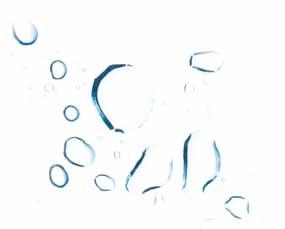
5 minute read
6. Corporate practices
Corporate practices 6
NPEs are used commonly in supply chains outside of EU
The findings presented in Dirty Laundry 2: Hung Out to Dry clearly indicate that the use of NPEs is widespread throughout the international textile industry and during the production of items in many manufacturing countries for a host of major international clothing brands.
Given the recognition 74 of the need for cessation of releases of NP in the EU, and the different restrictions that have been imposed on NP and NPEs both within the EU and elsewhere, it is surprising that, prior to Greenpeace’s Detox campaign 75 , none of the major clothing brands required their suppliers to eliminate the use of these chemicals in production processes, particularly as the use of these substances is ubiquitous (they are – according the brands themselves - widely used in detergents and scouring agents). This is despite the fact that many of the brands have recognised the hazards of NPEs/NP, and many other dangerous chemicals, and some have placed restrictions on their presence in their products.
‘Zero discharge’ commitments by some industry leaders and the Joint Roadmap
The evidence in Dirty Laundry and Dirty Laundry 2 formed the basis of the Greenpeace Detox challenge 76 to global sportswear and fashion brands. A number of brands took up this challenge and made individual commitments 77 to zero discharge of hazardous substances within one generation, taking responsibility for eliminating the use and release of such persistent, toxic chemicals into the environment and thereby aiming to prevent the further impacts on people, water and wildlife resulting from their release. Six of these brands – the sportswear brands Puma, Nike, Adidas and Li-Ning, and the fashion brands H&M and C&A – are now collaborating on the further development and implementation of the ‘draft joint roadmap towards zero discharge of hazardous chemicals’ 78 launched by the brands in November 2011, which sets out the steps that they mean to take to achieve their commitments and invites others to partner in this endeavour. 79
These commitments include specific actions on the use of NPEs, for example H&M 80 states it will:
Request information from our suppliers in relation to the use (e.g. for other brands) of Nonylphenol ethoxylates (NPEs) in the manufacturing processes and request that they require from their sub-supplier to not intentionally use and release NPEs. At the same time, we will reemphasise to our suppliers that they are contractually bound to comply with the strict standards of our Restricted Substances List. As part of this request for information we will immediately provide Greenpeace the identity 81 of the suppliers responsible for the products tested in the Greenpeace Report, and the quantities of all alkylphenol ethoxylates (APE) discharges, and work with urgency to reinforce the controls on all possible releases of APE from their production.
The emphasis on the use and release in production processes is a significant step forward – recognising the need not just for controlling the contamination of the final product but also for tackling the manufacturing emissions. It also recognises that the problem is not limited to NP/ NPEs requiring that the entire AP/APE family – many members of which show similar properties 82 – should be addressed (in line with the precautionary principle). However, the draft joint roadmap does not yet include a specific commitment or a date to eliminate all uses of APEs. Given the fact that textile manufacturing within the EU does not use APEs, it should be possible for major brands to eliminate at least the major uses (scouring, degreasing and detergents) of APEs throughout the manufacturing supply chain by the end of 2012.
In the joint roadmap, the brands identify that ‘conversion for detergents/ scouring/ degreasing could yield a reduction of up to 50% of APEO 83 / NPE in Apparel/ Footwear supply chains’. The identification of a ‘positive list’ of APE/NPE-free detergents and the remaining sources (including ‘non-intentional uses’) of APEs uses in 2012 are recognised by the joint roadmap as necessary additional steps to allow for a shift to 100% elimination of APEOS.
Brands can make immediate direct changes in supply chains
Many of the countries where the supply chains for international textile brands are located are known for inadequate controls on the manufacturing, use and release of hazardous substances. The example of China, where a large proportion of the textile supply chain is located, is given in Dirty Laundry (p.29), which details intrinsic problems with regulations that do not adequately address hazardous pollutants and poor enforcement of standards that do exist. Legislation to eliminate the use and release of substances such as APEs in many of the countries where manufacturing takes place is not an immediate prospect.
However, whether legislation is imminent or not, all brands have a responsibility to act and to ensure that there are no differences in the practices of suppliers in countries with differences in legislation, leading to double standards. Brand owners are in the best position to immediately and directly influence the environmental impacts resulting from the manufacturing of their products, not only through the suppliers that they choose but through product design and the control they can exert over the use of hazardous chemicals in processing and their presence in the final products. Larger brands – individually and jointly (as seen in the joint roadmap) can exert an enormous amount of pressure on their suppliers to achieve high standards and provide adequate information.
It is therefore vital that brands make a commitment to eliminate major uses of APEs by the end of 2012 with the complete elimination of all uses of APEs to follow swiftly, for example by the end of 2013. Limits that the brands set for the absence 84 of APEs both in preparations and products need to be set at the lowest possible level, to ensure full elimination of the use of these substances and prevent their re-distribution to aquatic ecosystems throughout the world.








